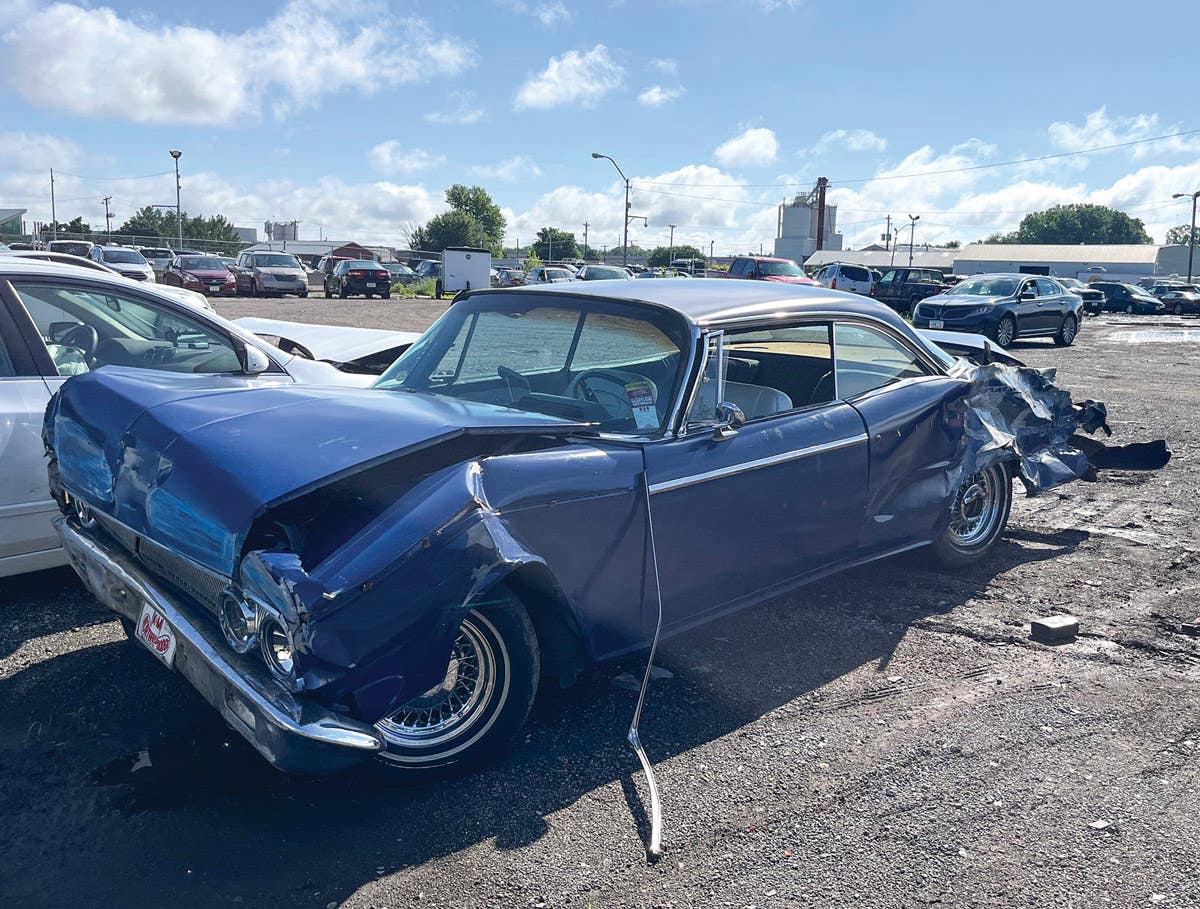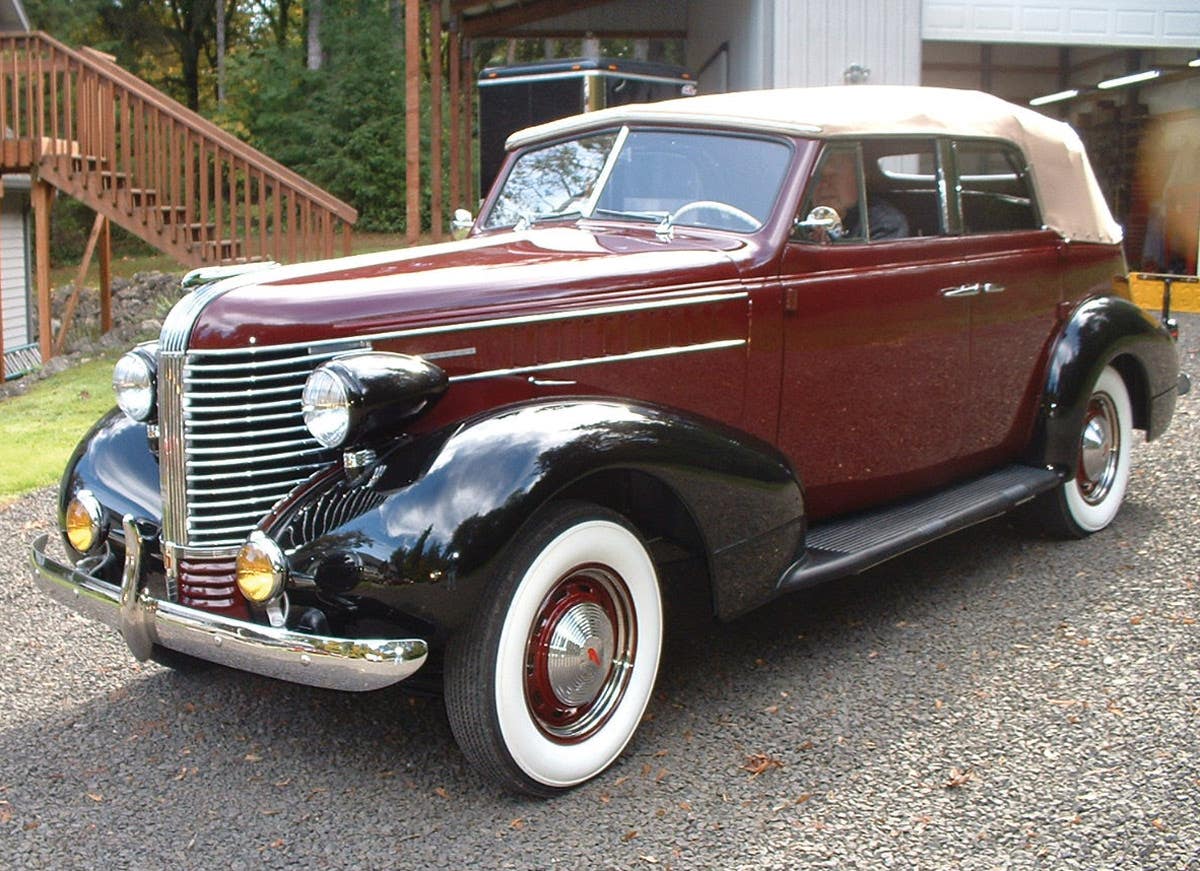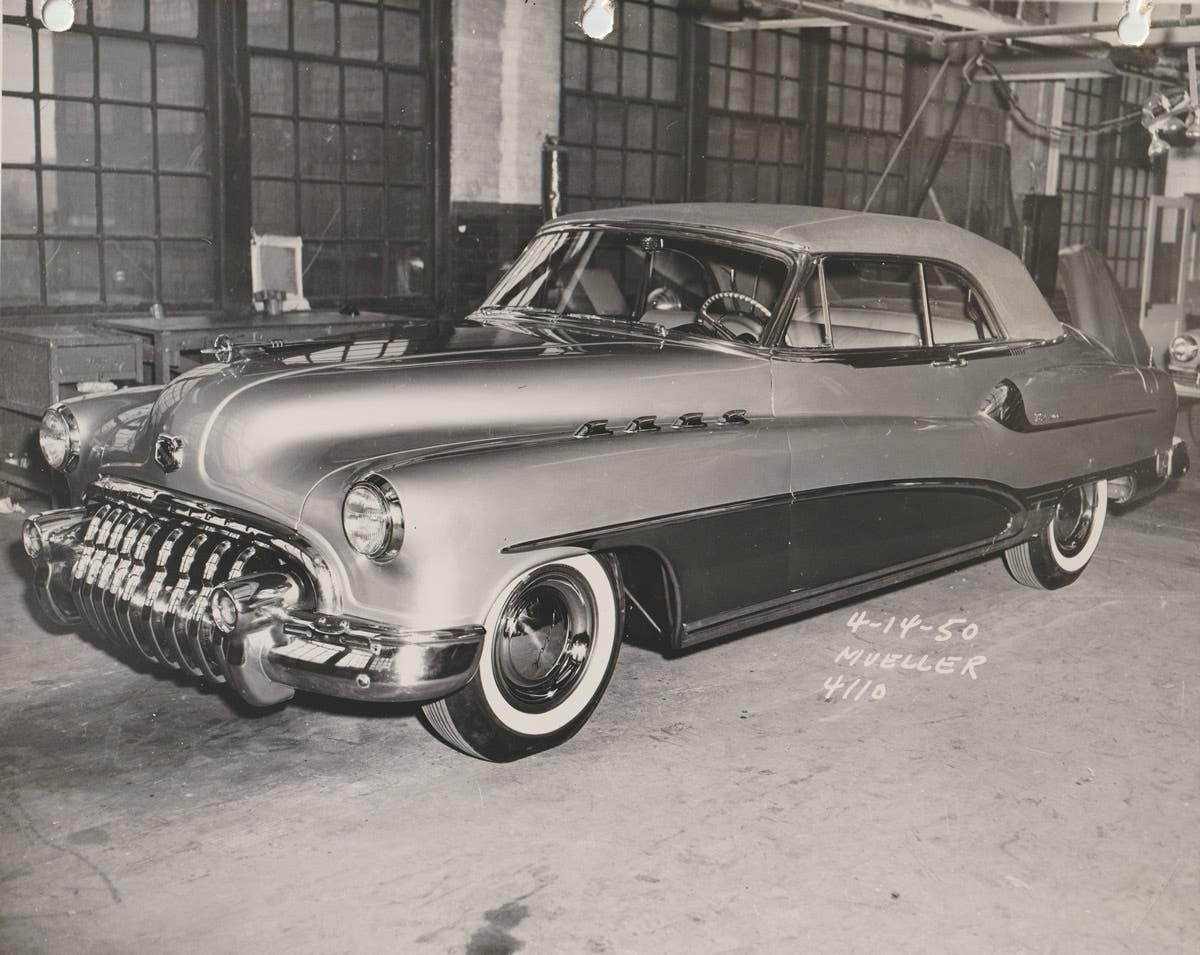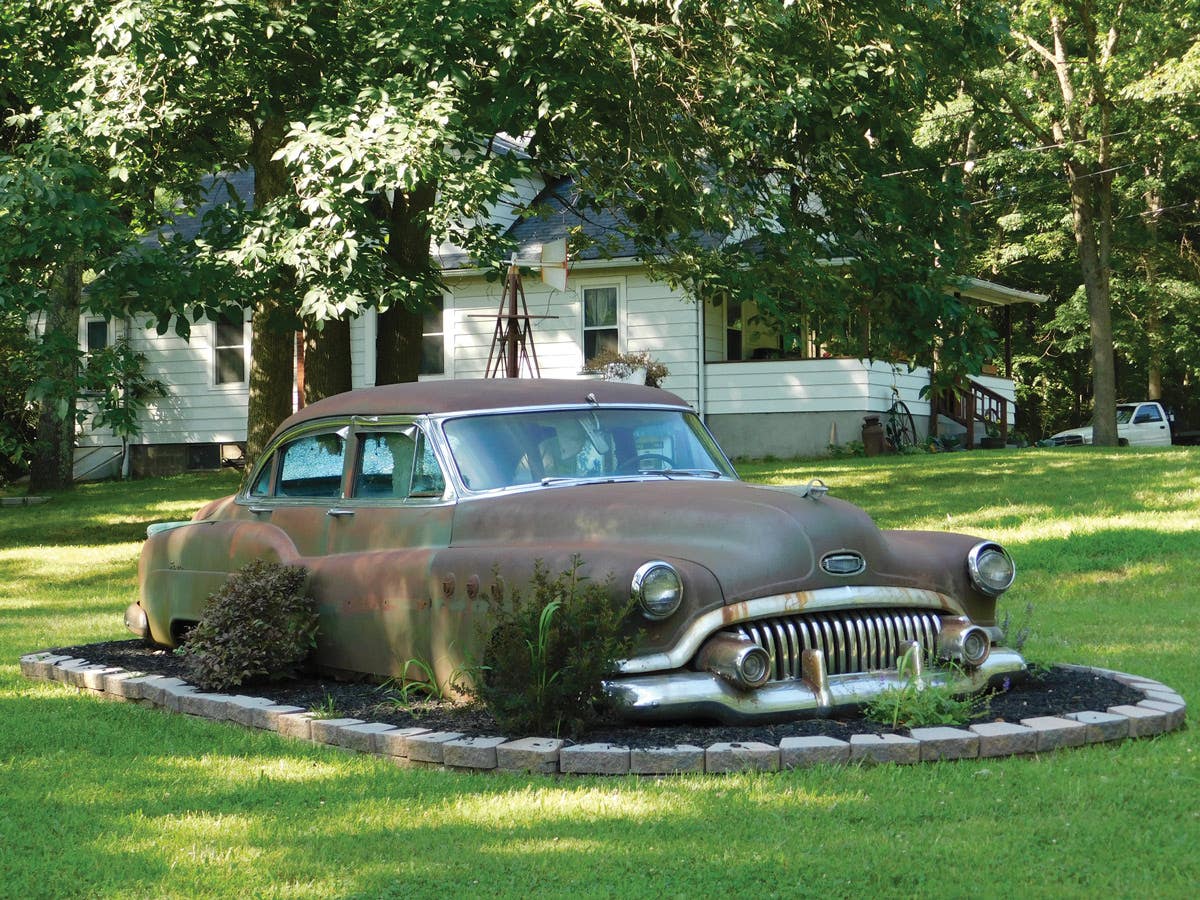Car of the Week: 1957 Chevrolet Bel Air racer
Todd Newton had never had to worry about making one of his restoration projects TOO good before. But then again, he had never tried to authentically resurrect a genuine, family heirloom, grassroots race car, either. Such was the challenge Newton’s Auto Restoration — the shop in Spring Green, Wis., that Newton runs with his father, Ardell — faced when they tackled a 1957 Bel Air hardtop that had been a racing demon back in the 1960s for Merle Newton., Todd’s grandfather. “I really had to be careful not to over-restore it and make it too nice,” Todd Newton said. “The rough edges around the windows and the holes that they cut in the floor — I left them all just the way they were. I didn’t smooth things out or try to do anything different. We didn’t want anything to be too good. If they torch cut something, I did too.” Todd and his father, Ardell, are probably two of the only guys around who can judge whether the car looks better today than it did back in its racing days, but its pampered life is certainly different now than it was four decades ago.
Story and photos by Brian Earnest
Todd Newton had never had to worry about making one of his restoration projects TOO good before. But then again, he had never tried to authentically resurrect a genuine, family heirloom, grassroots race car, either.
Such was the challenge Newton’s Auto Restoration — the shop in Spring Green, Wis., that Newton runs with his father, Ardell — faced when they tackled a 1957 Bel Air hardtop that had been a racing demon back in the 1960s for Merle Newton., Todd’s grandfather.
“I really had to be careful not to over-restore it and make it too nice,” Todd Newton said. “The rough edges around the windows and the holes that they cut in the floor — I left them all just the way they were. I didn’t smooth things out or try to do anything different. We didn’t want anything to be too good. If they torch cut something, I did too.”
Todd and his father are probably two of the only guys around who can judge whether the car looks better today than it did back in its racing days, but its life is certainly different now than it was four decades ago. Back then, Merle had teamed with a partner to campaign the car at a variety of tracks around Wisconsin, and by all accounts the car had a distinguished career. “It did real well. It was high-point car at numerous tracks,” Todd said. “It did well no matter where it went. They won a lot of races with it.”
The car in its current configuration probably came together around 1964, the Newtons figure, when a new 327-cid Corvette crate motor was dropped into the Bel Air. “We figure this body — he probably raced it this way for a year. There’s no way of knowing,” Todd said. “The motor he took from one car to the next … We know for a fact the motor went from '64 on. It probably started out in a '55 Chevy.”
“The car’s last race was in Salem, Wis., in either 1967 or ’68.”
After that, the Merle Newton left the racing business and gave the car to his partner, but he kept the engine. “What happened is my grandfather bought a service station and didn’t have time to go racing anymore,” Todd said. “They parked the car, but it was one of those things where he didn’t want to get rid of it. Then the guy who drove it wanted to buy it and they made an agreement that if they ever wanted to sell, we’d have the chance to buy it back… But the motor didn’t go with it. He kept the motor and we’ve had that here all these years.”
Eventually, the Newton family got the chance to buy the car back, and Todd didn’t hesitate. “I can remember it from when I was a kid, you bet,” he said. “I’m 43 and I can remember being a very little kid, maybe 7 or 8, and I remember sitting in it in the garage and cranking on the wheel … I was heartbroken when they let it go. That car was a big deal to me and it’s priceless as far as I’m concerned. I wouldn’t let that car go for anything.”
The car was never raced, or really used for anything, after it left the family, but it did have the misfortune of nearly drowning in a flood in 1993. “It was buried with water clear up over the dash,” Newton said. “They pulled it out of the building right away, but then they took it home and put it in a semi trailer and it never came back out, and the mud just laid on the floor panels and they all rusted out. Other than that, there was no real rust issues.
“We did put a new floor pan in it, exactly like they did it. Other than that, we re-chromed the bumpers — they are torch cut to fit around the slicks, and we left them like that. The windshield that’s in it, I didn’t replace that. It has the original racing seat. We put the motor back in it and the same three-speed transmission.
“It’s even got the same racing slicks on it that it had for its last race!”
With a snappy black-and-white paint scheme and the omnipresent ’57 Bel Air body, the car had plenty of good looks while it was going in circles. It’s hard to imagine the paint and graphics ever looking any better on the car than they do today. The Newtons gave the Chevy gleaming new paint inside and out, repainting the bare interior sheet metal a gleaming white and re-creating the “57” and “Newton’s Garage” markings on the exterior. “We made big stencils of everything so we could keep everything just the way they had it,” Todd said.
Like most race cars of the period — or any period, for that matter — the Newtons’ Bel Air featured a mixed bag of parts and backyard fabrication. The L-76 engine, Todd estimated, churns out about 365 hp in racing trim. “It’s a Corvette ‘fuelie’ block ... but without the fuel injection,” Newton said.
The 327 carried a Holley four-barrel, Corvette-issue valve covers and a chrome air cleaner. It ran without an alternator — just a healthy battery charge on race day — and the oil dipstick is secured with a key padlock, apparently to prevent any skullduggery or engine sabotage from enemy drivers.
The exhaust is custom made, as were the rims and many of the suspension parts. The front and rear of the stock ’57 Chevy frame was reinforced and the Bel Air carried a sturdy roll cage. The floor of the trunk has been removed to lighten the car and make room for the fuel cell.
Drum brakes from a 1937 Ford 3/4-ton truck did the stopping, and there are three different-sized wheels at the corners: a pair of 13.5 x 15-inchers on the right side, a 9.5 x 15 on the left front and 12 x 15 on the left rear.
One of the car’s most unique features is a “porta-power” suspension adjusting device mounted to the floor just to the right of the shifter. During the race, it could be used to stiffen the suspension on the right front wheel. “If the car was not handling, the driver could reach down and pump on the porta-power and get some pressure on that right side," Newton said. "It just put some pressure on that right front.
“They used to run that car at all over, and the whole reason that got put in there, from what I understand, is they were having trouble getting the car to handle at Columbus (Raceway). They had seen one in a modified car, and they tried it and ran it and won the race.”
The Newtons figure their beloved racer sat unseen and unloved for far too long and they now make efforts to get the car out in public whenever they can. The car has done some celebratory parade laps at Wisconsin tracks at racing events and has made a few appearances at shows and hobby events. Even driving it gently at slow speeds can be a challenge, however. “Oh, it makes your heart pound away,” Todd said. “It’s real crude, of course. No power steering or anything. It’s a workout. It wants to go left, that’s for sure… We’ve got a little deal with the local police here where they let me run it on the street to get down to the [car show] and it’s a challenge. It steers hard. It shifts hard. It’s a ‘man’s man’ car.
“It’s hard to take places, though,” Todd added with a laugh. “The tires are too fat to fit in our trailer. And it’s hard to get anywhere with it. It doesn’t like grass! You can get stuck in the littlest hill with those slicks on it. But it’s a lot of fun.”
“I never anticipated taking that car and winning any shows or anything. We did it because it was my grandfather’s … but we’ve taken it to shows and it always seems to win trophies. It amazes me all the attention it gets. No matter where it goes. We took it to Iowa — for some reason we got the crazy idea to take it down there for a show, and car had never been anywhere near Iowa — and the people there went crazy over it. When we take it anywhere, it’s always a lot of fun.”
Got an old car you'd like to see profiled as our "Car of the Week"? E-mail us at oldcars@krause.com and tell us about it.
Click here to read more from our "Car of the Week" Archives.
More suggested reading:
- Standard Catalog of Chevrolet CD
- Standard Catalog of American Muscle Cars 1961-72 (Digital Download)
- Lost & Found: Great Barn Finds & Other Automotive Discoveries
More Resources For Car Collectors:







